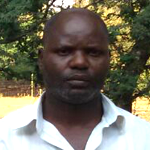Urology is a medical and surgical specialty that deals with urinary tracts of males and females, and the reproductive system of males. Indian hospitals have some of the finest urologists who have valuable expertise to diagnose, treat, and manage patients with urological disorders. The organs covered by urology include the kidneys, adrenal glands, ureters, urinary bladder, urethra, and the male reproductive organs (testes, epididymis, vas deferens, seminal vesicles and prostate).
Combining the latest World class technologies with the healing touch of experienced hands, HealthTripToIndia affilated Hospitals bring the best -in-class patient care within your reach. Painless procedures, assured relief and a success rate that compares favourably with the best such facilities in the World.
Minimally Invasive Surgeries for Kidney stone-no pain, no cuts.
HOLEP: Holmium Laser Enucleation of the prostate (HoLEP) is a modern alternative to the standard Transurethral Resection of the Prostate (TURP) procedure for bladder outflow obstruction due to BPH. It requires a short period of hospitalisation and an anaesthetic. A catheter (a tube which drains the bladder) is also needed for 1-2 days until the urine clears. Patients are advised to take life quietly and to avoid straining or heavy lifting for four weeks after the surgery.
TURP: Transurethral resection of the prostate (commonly known as a TURP,plural TURPs, and rarely as a transurethral prostatic resection, TUPR) is a urological operation. It is used to treat benign prostatic hyperplasia (BPH). As the name indicates, it is performed by visualizing the prostate through the urethra and removing tissue by sharp dissection. This is considered the most effective treatment for BPH. This procedure is done with spinal or general anesthetic. A triple lumen catheter is inserted through the urethra to irrigate and drain the bladder after the surgical procedure is complete. Outcome is considered excellent for 80-90% of BPH patients.
Uro Oncology, World class treatment for cancer of Kidney, Bladder and Prostate.
Most advanced facilities for advanced Laproscopic Urological Procedures.
High-end male and female urological reconstructive surgery.
Percutaneous Nephrolithotomy (PCNL) Surgery for Kidney Stone- No Pain, No Cuts.
What is a kidney Stone?
A kidney stone also called as renal calculi are solidified calcium salts deposits that forms in a kidney when these salts that are normally found in the urine become highly concentrated. A stone may stay in the kidney or travel down the urinary tract. Kidney stones vary in size. A small stone may pass on its own, causing little or no pain. A larger stone may get stuck along the urinary tract and can block the flow of urine, causing severe pain or bleeding.
Percutaneous Nephrolithotomy (PCNL) Surgery in India
Percutaneous Nephrolithotomy, or PCNL, is a procedure for removing medium-sized or larger kidney stones from the patient's urinary tract by means of a nephroscope passed into the kidney through a track created in the patient's back. This procedure uses an ultrasonic or laser probe to break up large kidney stones and suction it out. This procedure is usually done under general anesthesia or spinal anesthesia.
In percutaneous nephrolithotomy or nephrolithotripsy, the surgeon makes a small incision in your back, and then puts a hollow tube into your kidney and a probe through the tube to remove the stones from your kidney.
In nephrolithotomy, the surgeon removes the stone through the tube. In nephrolithotripsy, he or she breaks the stone up and then removes the fragments of the stone through the tube. The purpose of PCNL is the removal of renal calculi in order to relieve pain, bleeding into or obstruction of the urinary tract, and/or urinary tract infections resulting from blockages.
Why is Percutaneous Nephrolithotomy (PCNL) Necessary?
Whilst the majority of small kidney stones can be treated using the shock wave machine (Lithotriptor), large stones are not suitable for this form of treatments and require removal by means of an operating telescope (PCNL).
There are other situations where relatively small kidney stones may require surgical treatment rather than Lithotripsy, for instance if the stone is difficult to see on x-ray or if it is particularly hard. Even if large kidney stones do not cause symptoms they still require treatment, as we know from experience that if left untreated patients eventually run into difficulties.
To help the urologist to decide what is the best treatment for your kidney stones, e-rays will have been taken and these will have been reviewed by a team of urologists and radiologists (x-ray doctors). Your case will have been discussed to ensure there is general agreement that surgery is the correct form of treatment for your stone(s).
What are the Advantages Percutaneous Nephrolithotomy (PCNL) Surgery?
- Allows large or complicated stones to be treated in a minimally invasive fashion, where in the past this would have necessitated a large skin incision.
- Hospital stay is 3-4 days, and out of hospital recovery time is significantly shorter than traditional open surgery.
- Many require half the pain medication.
- Achieves a better stone-free outcome.
There are other situations where relatively small kidney stones may require surgical treatment rather than Lithotripsy, for instance if the stone is difficult to see on x-ray or if it is particularly hard. Even if large kidney stones do not cause symptoms they still require treatment, as we know from experience that if left untreated patients eventually run into difficulties.
To help the urologist to decide what is the best treatment for your kidney stones, e-rays will have been taken and these will have been reviewed by a team of urologists and radiologists (x-ray doctors). Your case will have been discussed to ensure there is general agreement that surgery is the correct form of treatment for your stone(s).
Post Query
Refer a Patient
Request a Call Back




